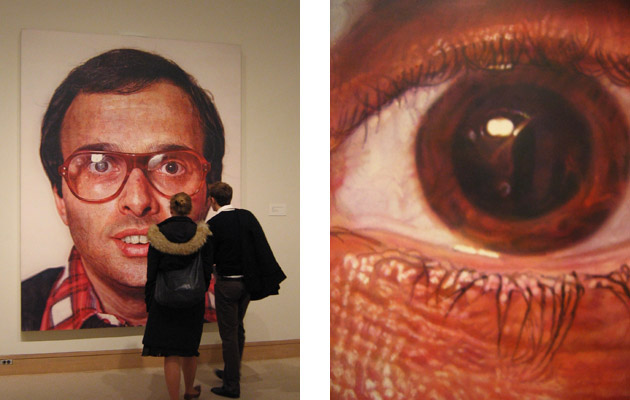I think most paintings are a record of the decisions that the artist made. I just perhaps make them a little clearer than some people have.

"Charles Thomas "Chuck" Close" is an American painter and photographer who achieved fame as a photorealist, through his massive-scale portraits. Close is known for using creative and intricate patterns to portray a human portrait. Though a catastrophic spinal artery collapse in 1988 left him severely paralyzed, he has continued to paint and produce work that remains sought after by museums and collectors. Close lives and works on the south shore of Long Island, and New York City's East Village and in Bridgehampton, New York. His first wife was Leslie Rose with whom he has two daughters. They divorced in 2011 and Close is now married to artist Sienna Shields.
More Chuck Close on Wikipedia.Europe often seems sort of overly concerned with the weight of history and stuff. We don't have much history here, so... .
What difference does it make whether you're looking at a photograph or looking at a still life in front of you? You still have to look.
I tried to, with a series of self-imposed limitations, back myself into my own personal corner where nobody else's answers would fit. I've always thought that problem-solving is highly overrated and that problem creation is far more interesting.
At the same time that I'm finding the color world I want, I'm also trying to make the imagery, you know, by the nature of the strokes themselves.
I've said it's a little bit like a magician performing for a convention of magicians... all the magicians in the audience watching this illusion-Do they see the illusion, or do they see the device that made the illusion? Probably they see a little of both.
I love what used to be called women's work. When women make quilts or something like that, it was something they could pick up or put down, and go back to after they start dinner or weed the garden or whatever... feed the baby. I like that. I liked knowing where I was going to be for a while.
Sculpture occupies real space like we do... you walk around it and relate to it almost as another person or another object.
Very few people have written about what a work really looks like, especially once there were photographic reproductions of works and so they felt that the photograph would carry the information, and, of course, it does a piss poor job of letting someone know of the scale of the work and of the physicality and how thick the paint was and what the touch was.
Copyright © 2024 Electric Goat Media. All Rights Reserved.